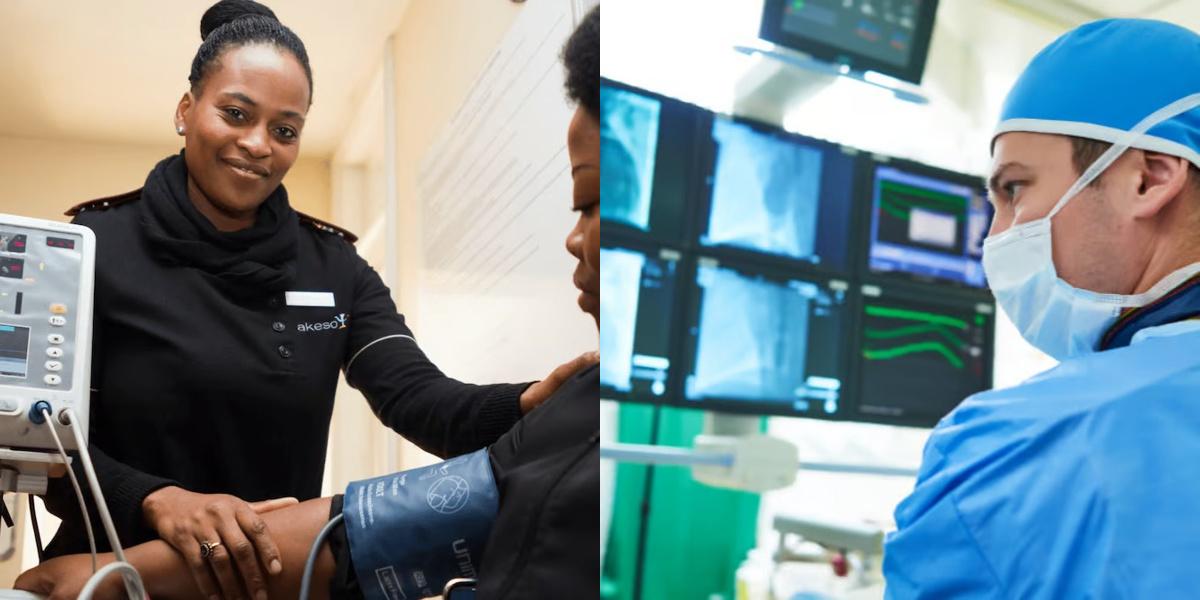Patient Care Technician vs Radiology Technician

Key Points:
- Patient Care Technicians assist nurses; Radiology Technicians operate medical imaging equipment.
- Patient Care Technicians earn less on average than Radiology Technicians.
- Both jobs are in high demand, but Radiology Technicians may have more job openings.
- Patient Care Technicians can train online or in-person, while Radiology Technicians require in-person training.
- Patient Care Technician training is generally faster and less expensive than Radiology Technician training.
As more individuals seek careers in the healthcare field, the demand for skilled professionals continues to grow. Two popular career paths within the healthcare industry are patient care technician and radiology technician. While both professions involve providing care to patients, there are distinct differences in their roles and responsibilities. In this blog post, we will explore the key differences between a patient care technician and a radiology technician, as well as their job descriptions, education and training requirements, and career outlook.
Patient Care Technician
- Short-term training programs are available for patient care technicians, which can be completed in a few weeks to a few months.
- These programs cover essential nursing skills, such as taking vital signs, administering medications, and assisting with activities of daily living.
- Some programs also include a clinical component, where students gain hands-on experience in a healthcare setting.
- After completing the training program, students may choose to pursue certification as a patient care technician, although it is not always required for employment.
Radiology Technician
- Radiology technicians must complete a formal education program in radiologic technology, usually a two-year associate degree.
- These programs are offered by community colleges, vocational schools, and hospitals.
- Coursework typically includes anatomy, patient positioning, radiation safety, image evaluation, and patient care.
- Students also gain hands-on experience through clinical rotations in hospitals or other healthcare facilities.
- After completing the education program, radiology technicians must pass a certification exam to become licensed in their state. Certification is typically required for employment.
Patient Care Technician vs Radiology Technician: Career Outlook and Salary
Patient Care Technician
- The demand for patient care technicians is expected to grow in the coming years, driven by an aging population and increased healthcare needs.
- According to the Bureau of Labor Statistics (BLS), the employment of nursing assistants, which includes patient care technicians, is projected to grow 8 percent from 2020 to 2030.
- The median annual wage for nursing assistants was $30,850 in May 2020, according to the BLS. However, wages can vary depending on factors such as location, experience, and employer.
Radiology Technician
- The job outlook for radiology technicians is also promising, with the BLS projecting a 9 percent growth in employment from 2020 to 2030.
- This growth is attributed to the increasing need for diagnostic imaging in healthcare settings.
- The median annual wage for radiologic technologists was $63,710 in May 2020, according to the BLS. However, wages can vary depending on factors such as location, experience, and specialization.
Final Thoughts
Both patient care technicians and radiology technicians play important roles in the healthcare field. While patient care technicians focus on providing direct care to patients, radiology technicians specialize in operating imaging equipment to capture diagnostic images. The choice between these two professions ultimately depends on an individual's interests, skills, and career goals. Whether you prefer hands-on patient care or the technical aspects of diagnostic imaging, both paths offer opportunities for a fulfilling career in healthcare.
Ensuring accessibility for individuals seeking growth, Dreambound strategically places its educational programs in various locations. Delve into a more comprehensive understanding of the exciting opportunities within these two vocations by visiting:

Joanna Paragas is part of the Growth team at Dreambound. Her primary role involves creating various automation to streamline workflows and make tasks more efficient for the entire team. Beyond her professional endeavors, Joanna enjoys spending her free time playing with her dogs and enhancing her knowledge by enrolling in online courses.



